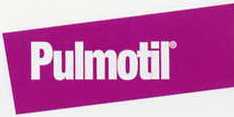NADIS Pig Disease Focus – March 2006
Enzootic Pneumonia.
Enzootic Pneumonia (SEP) caused by Mycoplasma hyopneumoniae is the most common respiratory disease seen in pigs both in the UK and worldwide.
It is estimated that the disease is present in more than 80% of pig herds in the UK but at variable levels.
The causative agent is neither a bacteria nor a virus, occupying a position somewhere between the two.
The key features of the organisms are that it is physically small and thus easily spread by the wind whilst still being susceptible to wide range of antibacterial drugs.
Clinical Signs.
In its uncomplicated form the disease has a relatively mild appearance with a low grade dry non productive cough often the only sign.
In severe infection particularly in previously naïve populations more drastic signs including lethargy, high temperatures and inappetance can be seen.
The age groups typically affected are 8-20 weeks although initial infection can occur earlier and disease can be seen in adults that are not immune.
In breeding animals meeting the disease for the first time fertility can be severely compromised with failure to cycle and elevated returns to oestrous evident.
Growth rates will be compromised by SEP.
The most susceptible parts of the lungs are the front 4 lobes and the front tips of the main (diaphragmatic) lobe.
10% of this tissue damaged by SEP will depress growth between 30 + 90kg by approximately 40gm/day.
In a herd even moderately affected by the disease a suppression in growth of double this is common.
The most significant clinical effect of SEP is to “open the door” to secondary pathogens that can cause the severe compromised pneumonic pig seen commonly on infected farms.
Pasteurellas and Streptococci are common secondaries but it is also possible for Mycoplasma to exacerbate the effect of PRRS virus in the lung.
SEP and Swine Influenza will often co-exist and be additive in their effect on the pig.
Diagnosis
In the herd known to be infected, diagnosis is simply achieved by clinical inspection.
A measure of the levels of disease can be obtained by examining batches of pigs at slaughter and measuring the levels of damage in the lungs of 30-50 pigs.
The lesions seen are plum coloured, fading to reddish grey as they age and solid, as shown in
In herds not known to be infected, the disease can be confirmed by examination of the affected lung tissue by histopathology and PCR testing.
Culture of the organism whilst possible is a highly specialised technique and frequently unsuccessful.
A blood test exists for the detection of antibodies to M. hyopneumoniae and, whilst false positive results can occur in individuals, it can be used to confirm the presence of the organism within a population.
Treatment
Treatment of groups or individuals clinically affected is with appropriate antibiotics.
Tetracyclines, Lincomycin and Tiamulin are highly effective against the organism but often alternatives are needed to treat individuals due to the mixed infection involving secondary bacteria that frequently occurs.
Long term medication via the feed has historically been needed in finishing pigs to suppress the disease, although better methods of control are now available.
Prevention and Control
The organism has constantly been shown to have the ability to spread 3km (2 miles) on the wind and, as such, any herd free of SEP is vulnerable to infection not just from other established neighbouring farms but also from pigs passing on lorries etc.
People are able to carry the organism in the nose for 48 hours and are a potential source of infection.
Clearly infected pigs entering the herd will introduce SEP and for established herds introducing stock, an extended off site isolation period (6-8 weeks) is essential.
The blood test could be used to screen pigs before removal from isolation.
Where the disease is present, control can be achieved by a combination of management and pharmaceutical approaches.
- Do not overstock pigs and limit group sizes in an air space.
- Ensure adequate ventilation – FRESH AIR!
- Separate age groups and operate an all in all out policy for buildings or rooms.
- Regularly wash and disinfect accommodation between batches.
- Ensure satisfactory thermal comfort.
- Hospitalise affected pigs in air spaces separate from the mainstream. Treat affected pigs rapidly.
- Vaccinate young pigs against Mycoplasma hyopneumonia – approximately 50% of the pigs produced in the UK are believed to be vaccinated typically at 1 week of age and again at weaning or alternatively at weaning and 2 weeks later.
- Strategically medicate pigs at danger times (e.g. following mixing and moving of accommodation) with appropriate antibiotics either via feed or water.
Copyright NADIS 2006 www.nadis.org.uk
While every effort is made to ensure that the content of this forecast is accurate at the time of publication, NADIS cannot accept responsibility for errors or omissions.
All information is general and will need to be adapted in the light of individual farm circumstances in consultation with your veterinary surgeon
| FURTHER INFORMATION | SPONSORS’ LINK |
| • Supporting British Livestock click here |
|
| FURTHER INFORMATION | SPONSORS’ LINK |
| • Supporting the british pig industry |
|
| FURTHER INFORMATION | SPONSORS’ LINK |
• To find out more |
|
| FURTHER INFORMATION | SPONSORS’ LINK |
• To find out more about |
|




